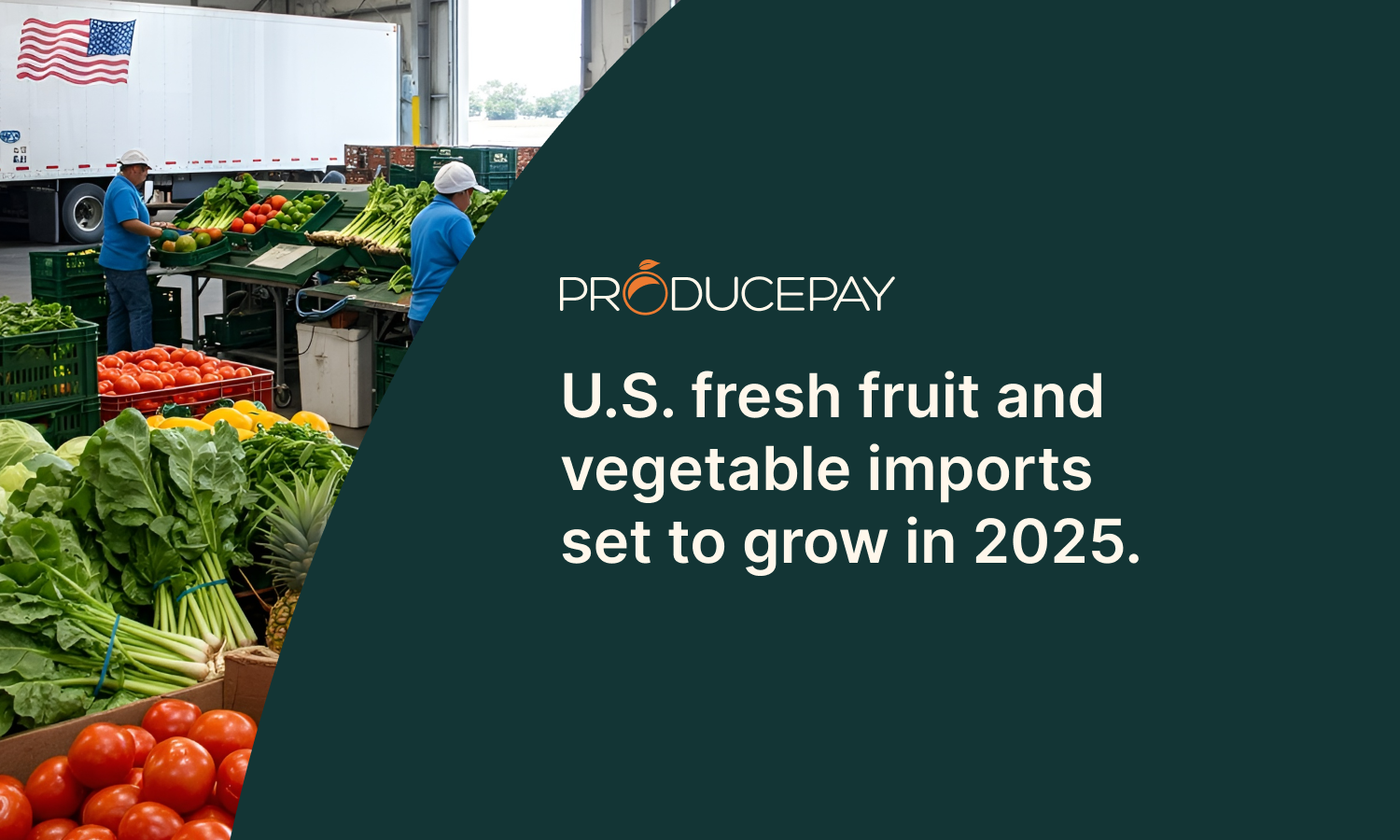
U.S. fresh fruit and vegetable imports set to grow in 2025
Over the past two decades, the U.S. fresh fruit and vegetable market has seen a substantial increase in imports. This trend has risen steadily, with few interruptions, since the completion of the North American Free Trade Agreement (NAFTA) in 2008 and its subsequent transition into the United States-Mexico-Canada Agreement (USMCA) in 2020.
Between 2007 and 2023, the share of fresh fruit availability supplied by imports grew from 50% to 59%, while fresh vegetable imports—excluding potatoes, sweet potatoes, and mushrooms—increased from 20% to 35%. Notably, certain crops experienced import share increases exceeding 20 percentage points during this period, including asparagus, avocados, bell peppers, blueberries, broccoli, cauliflower, cucumbers, raspberries, snap beans, and tomatoes.
Mexico continues to be the primary supplier, accounting for 51% of fresh fruit imports and 69% of fresh vegetable imports in 2023. Canada, on the other hand, supplied 2% of fruit and 20% of vegetables. Although there was a slight decrease in overall fresh fruits imported between 2022 and 2023, mainly due to reductions in blueberry and orange imports, the long-term trajectory indicates a continued dependence on imports to satisfy U.S. consumer demand for fresh produce.
2025 fruits and vegetables imports: forecast and trends
Fresh produce imports are expected to continue rising. The USDA forecasts an import value of $35.6 billion in 2025, with $20.1 billion allocated to fresh fruits and $13.5 billion to fresh vegetables, representing a 10% increase from 2024.
While some fluctuations are expected due to improving weather conditions in South America and Mexico—potentially lowering unit prices—structural factors such as domestic production limitations and high consumer demand will continue driving reliance on imports.
This trend has been evident in commodities like table grapes and tomatoes. In 2024, U.S. table grape imports exceeded domestic production for the first time, despite a 3% year-over-year increase in combined production from California and Washington. With consumer demand remaining strong throughout the year, the market is expected to remain highly dependent on imported grapes from Peru in winter, Chile in spring, and Mexico in early summer.
Similarly, tomato imports have surged amid domestic production challenges. In Florida, fresh tomato shipments dropped 81% year-over-year in November 2024 due to Hurricane Milton, while U.S. tomato imports reached a record 3.9 billion pounds from January to October, with Mexico supplying 90% of the total.
Discover the impact of hurricane season and how to prepare
Additionally, tropical fruits and off-season commodities will continue driving fresh produce imports growth. The USDA projects that imports of these commodities will expand at an annual rate of 2.1% over the next decade. Berries, avocados, and citrus from Mexico, Chile, and Peru are particularly expected to see sustained demand.
Produce supply chain dynamics creating volatility
For U.S. fresh produce marketers and retailers, the increasing dependence on fresh fruits and vegetables imports presents both opportunities and challenges. On one hand, imports help stabilize supply and enable year-round availability. On the other, they introduce significant volatility in pricing, supply consistency, and logistics, particularly in response to adverse weather, economic shifts, and trade disruptions.
Given this unpredictability of the supply chain dynamics, ensuring stable and efficient procurement is more critical than ever. At ProducePay, we believe that fresh produce market volatility can be mitigated through Predictable Commerce approach.
By fostering proactive and collaborative systems for growing, selling, and buying produce, our Predictable Commerce Programs integrate key industry stakeholders to establish a resilient, year-round supply chain for high-demand commodities. Through our extensive global network of sustainable growers, we align buyer demand with grower supply, ensuring that U.S. retailers can confidently meet consumer expectations despite market fluctuations.
Sources: USDA-ERS, Producebluebook, USDA-ERS, USDA-ERS, USDA-ERS

